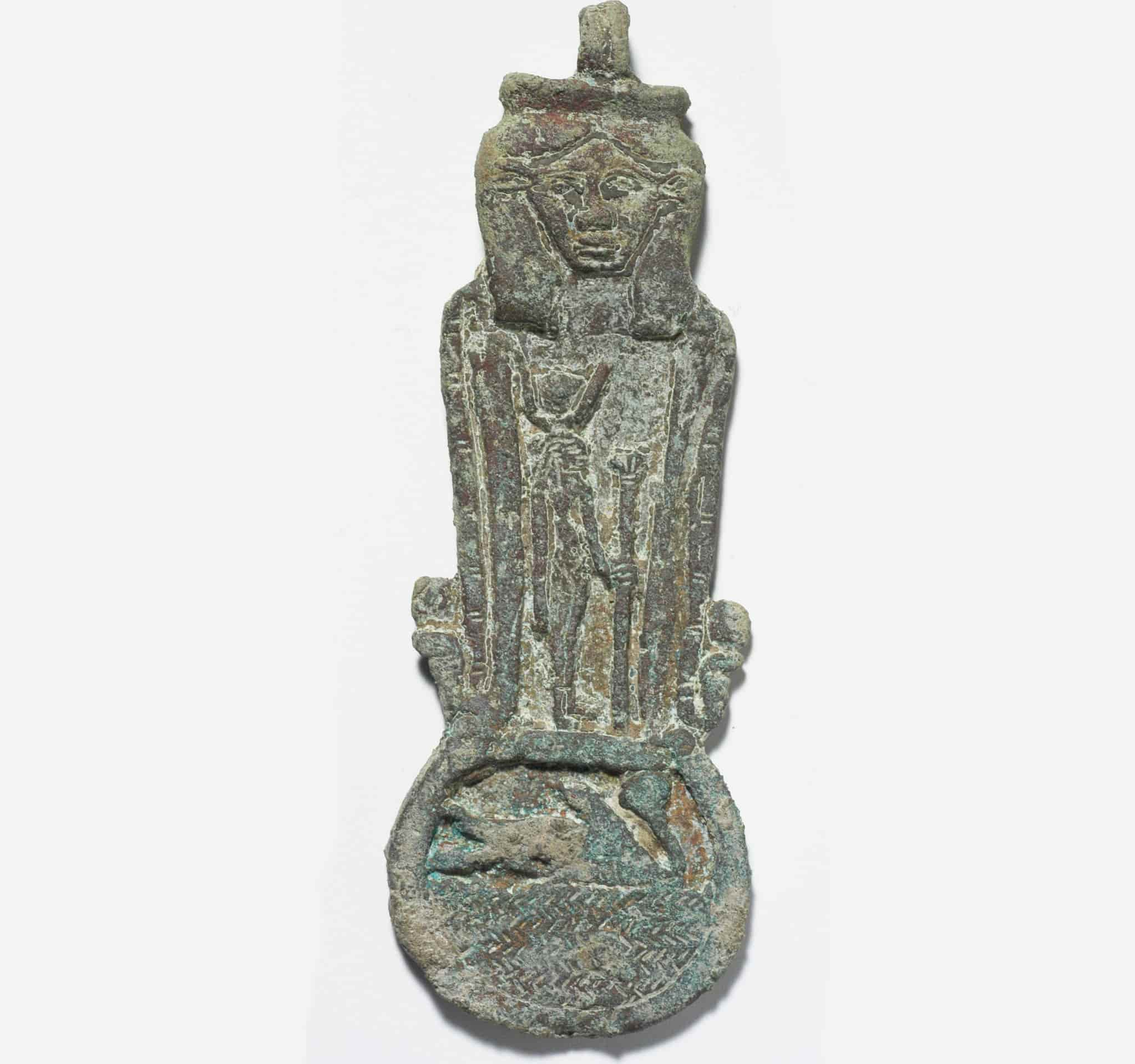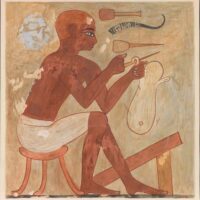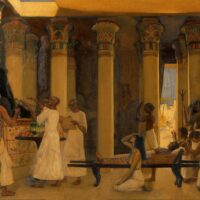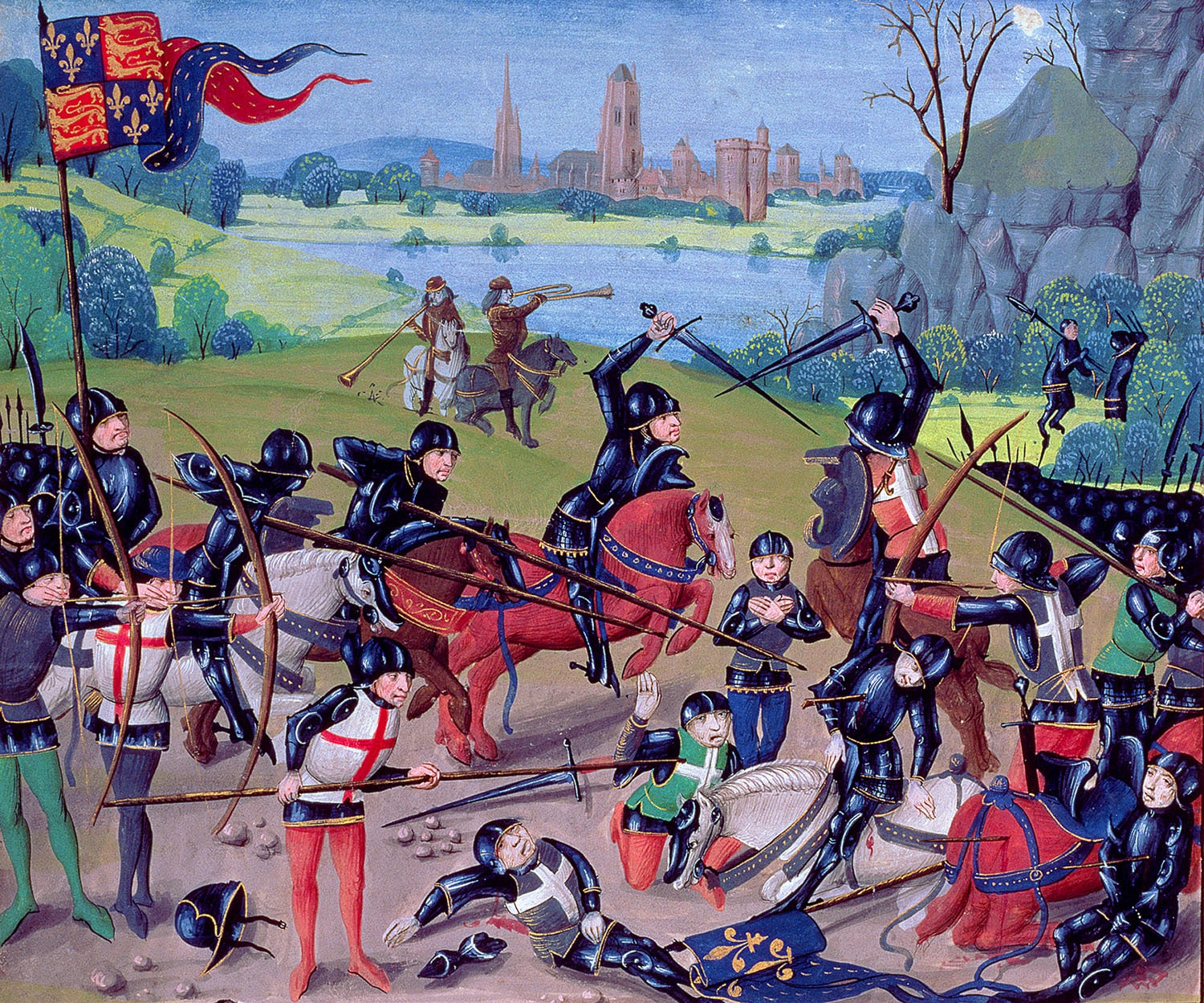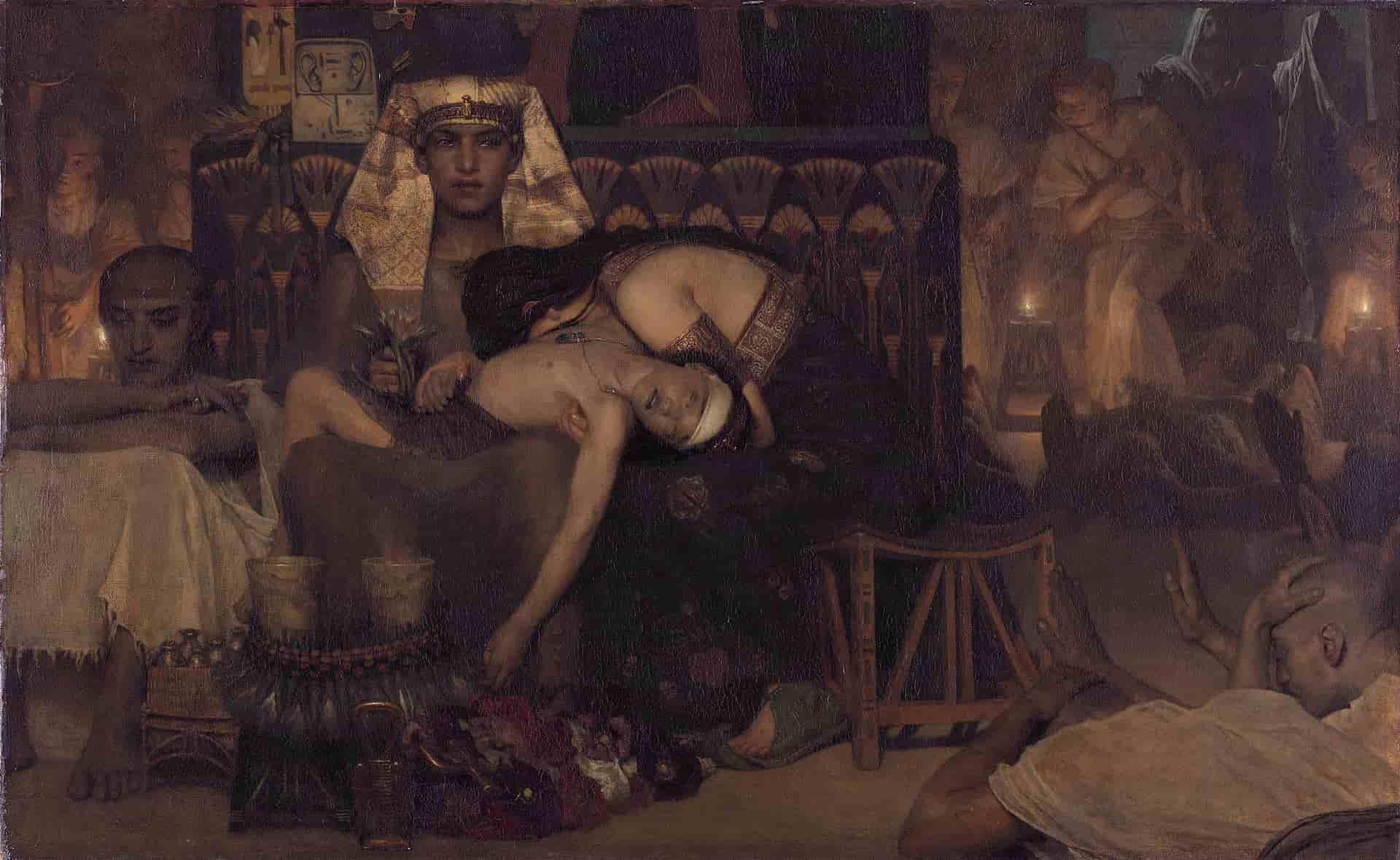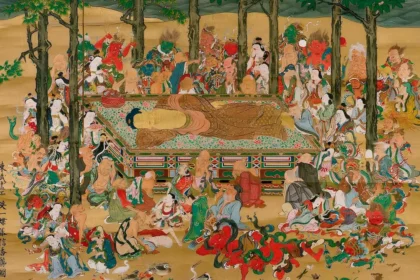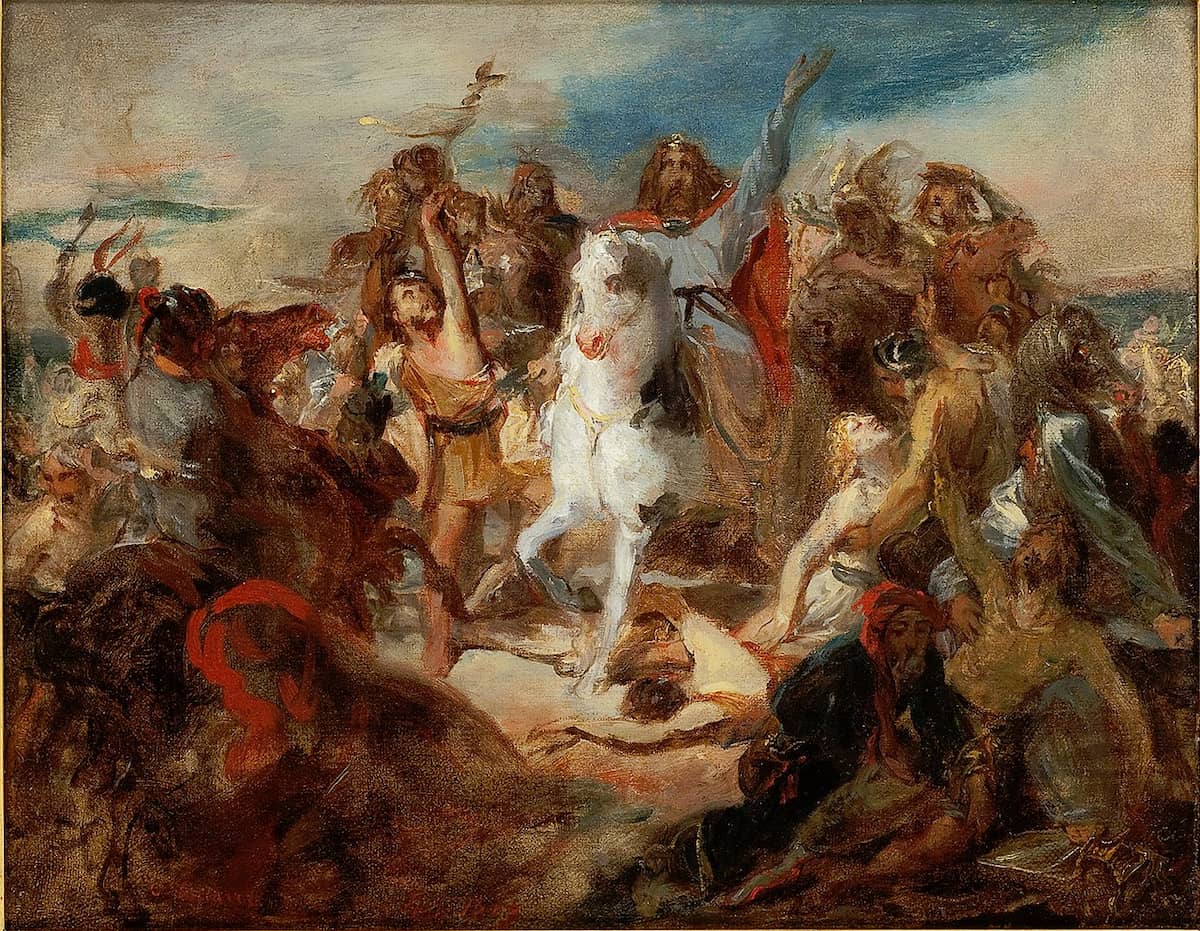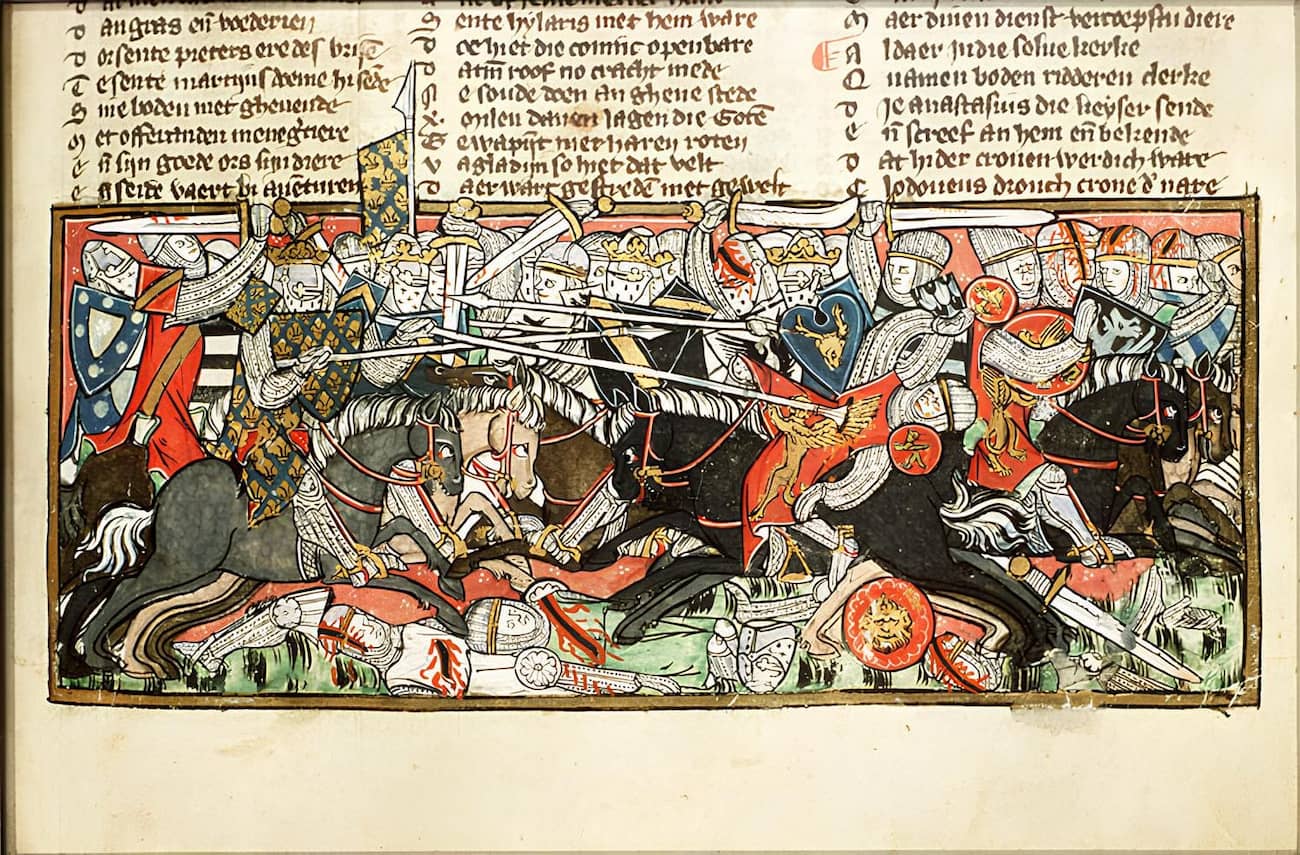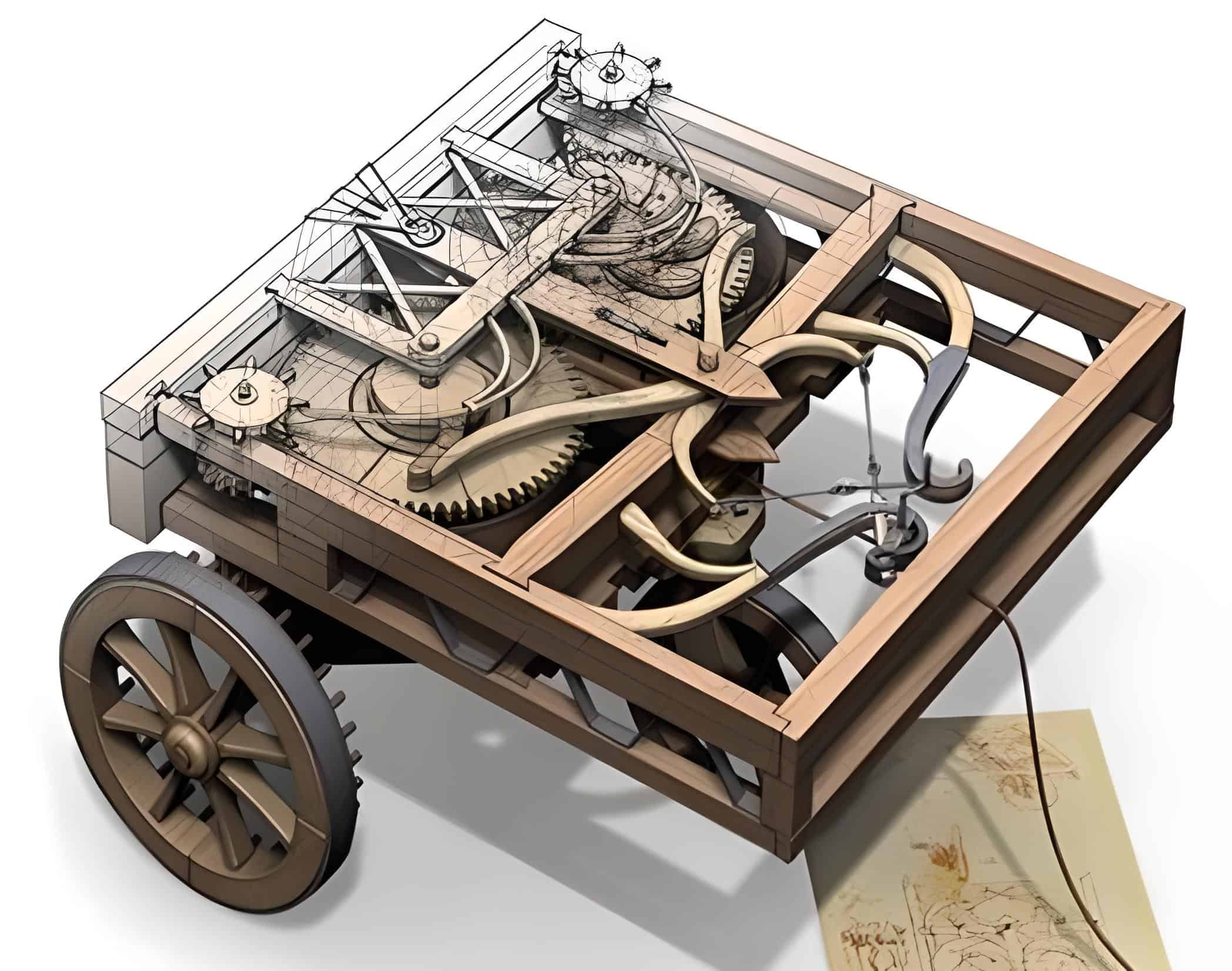In ancient Egyptian religion, Menat (Ancient Egyptian: mnj.t, modern Arabic: منات) is the name of a goddess associated closely with Hathor, and it’s also closely connected to an artifact sometimes used as a musical instrument (similar to the sistrum). Starting with the reign of Amenhotep III, Menat became associated with the cult of the goddess Mut.
Description
The Menat consists of several parts. One of them is a flat tablet called the Egida (from Greek “shield”), which was worn on the chest. Strings of beads were attached to it at one end, forming a bundle or loop. The other ends of the Egida were tied to a plate that rested on the owner’s back, acting as a counterbalance. The Egida was often made of faience (ceramic), but sometimes other materials such as leather, bronze, etc., were used. This artifact was frequently depicted in painted and carved images of events and deities associated with Hathor.
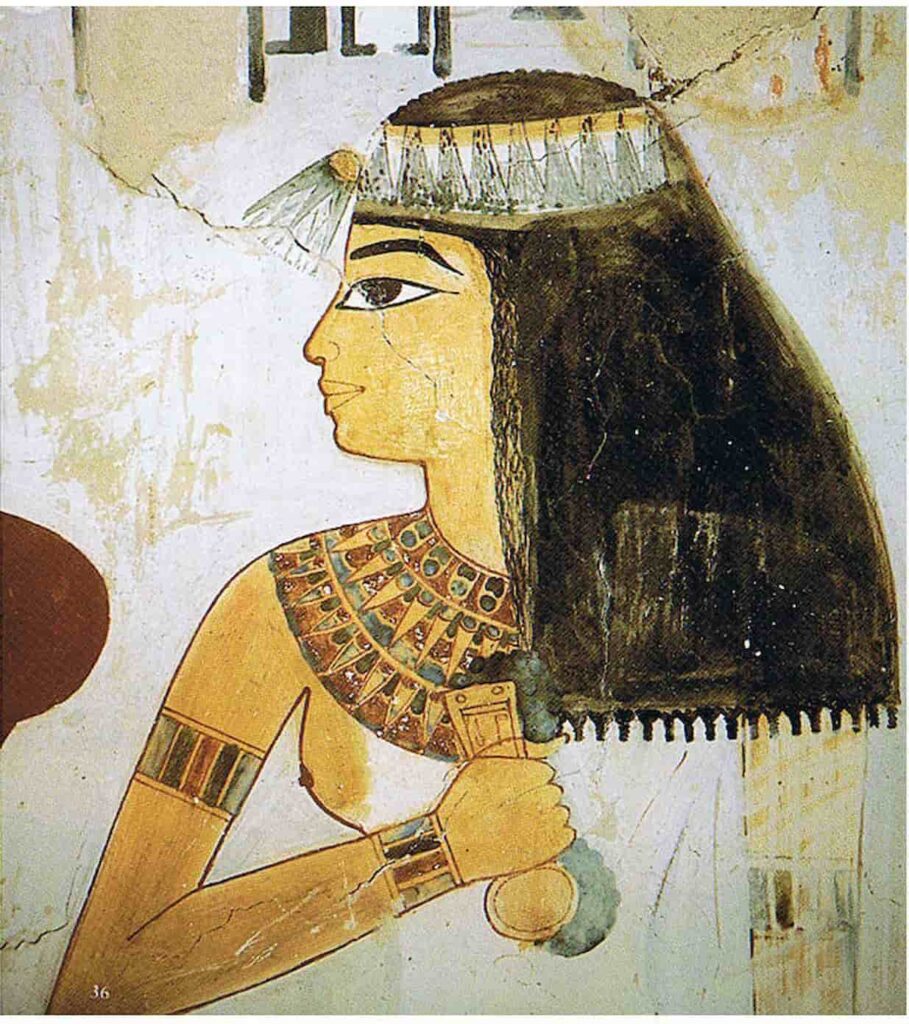
Application
The artifact, whose hieroglyphic spelling slightly differed from the name of the goddess Hathor, was used in two main ways:
- Often worn as a protective amulet (it was even boasted by the sons of Hathor and sometimes by the sacred bull Apis).
- Held in hand by the handle-plate and used by Hathor’s priestesses as a percussion instrument.
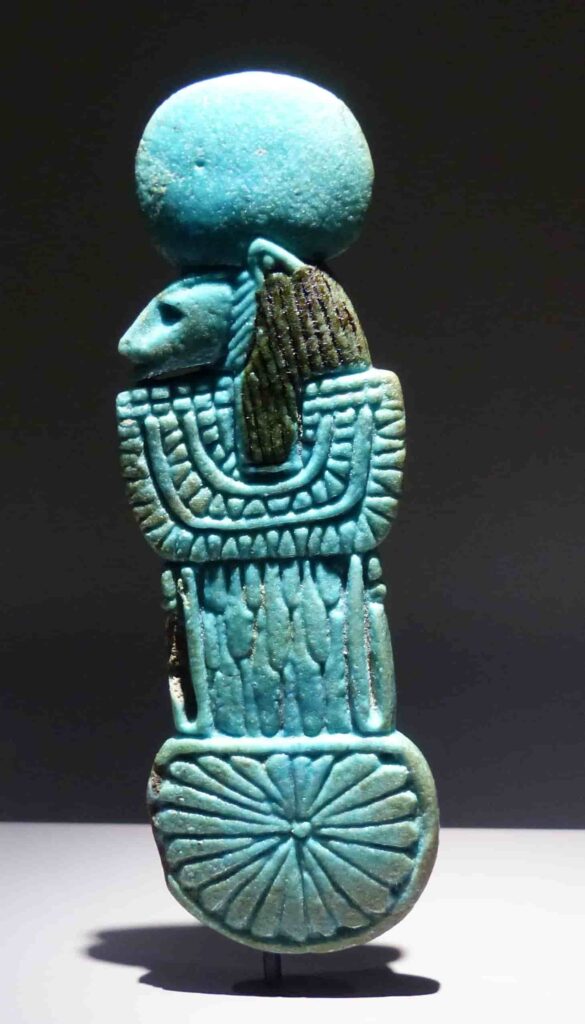
According to legends, the necklace was supposed to bring luck and protect the owner from evil spirits. During the reign of the Ramessides (XIX and XX dynasties of pharaohs, constituting the last two-thirds of the period known as the New Kingdom), it was believed that the Menat also safeguarded in the afterlife, so it was often placed in the tomb with the deceased as a burial offering. In daily life, women wore this necklace hoping for successful pregnancies and robust health, while men typically wore it as a symbol of masculinity.
Hathor’s priestesses used the Menat as a noisy percussion instrument.
The Menat was considered a feminine instrument. Female musicians and singers shook the Menat and sistrum in front of statues of deities. The combined sound of the sistrum and Menat imitated the rustling of papyrus reeds in the wind.

Usage
The menit was worn as a necklace and functioned as a rattle. It often occurs together with a sistrum. When used as a musical instrument, the counterweight served as a handle. Archaeological finds usually show only the counterweights made of faience or metal, which were usually decorated with motifs.
The use was based on the nature of the festivals, which were used either to appease the angry aspect or to honor the divine goodness. The menit was therefore often associated with the cults of the goddesses Hathor, Bastet, Sopdet, Tefnut, Sekhmet, and Isis. It is often depicted in ancient Egyptian artworks such as statues or murals.
In popular culture
The character Menat in Street Fighter V is named after this deity, plus he comes from Egypt.


